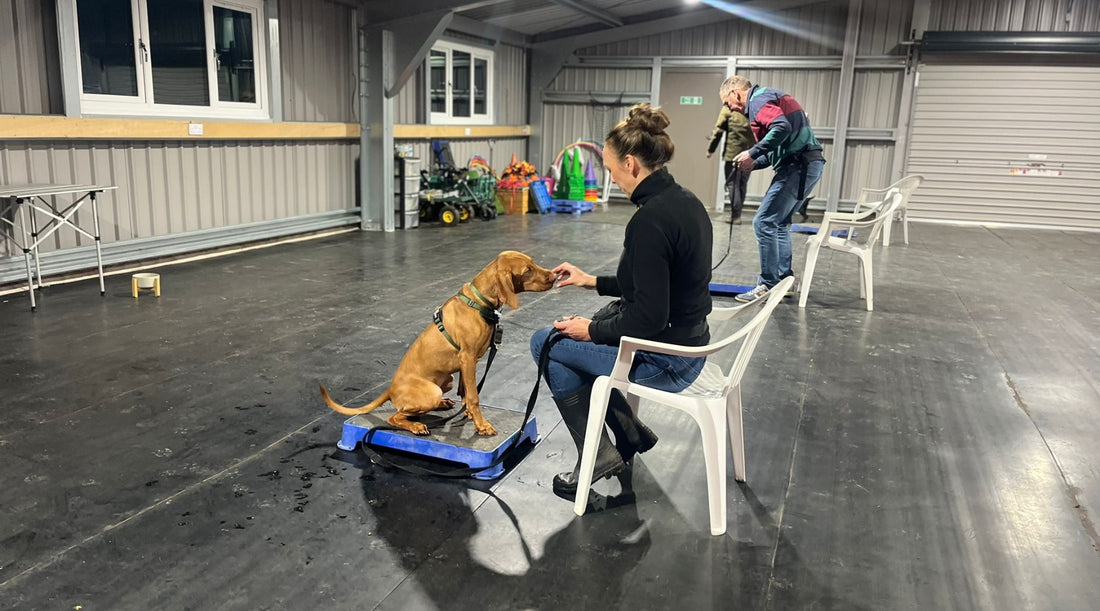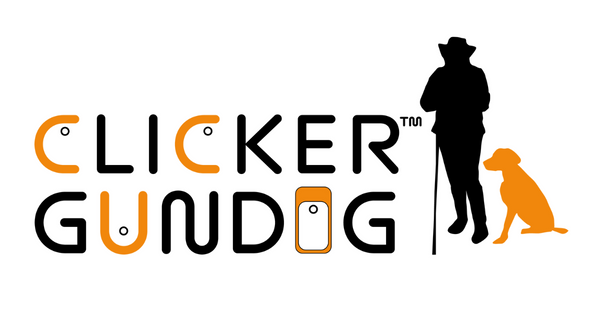
Fun indoor training activities for high-energy gundogs during winter
Now that the clocks have gone back and winter settles in, the days get shorter, and unpredictable cold, wet weather makes it tough to keep our high-energy gundogs busy - especially if they’re a pet and you’re not working them in the field regularly this season.
Our gundog breeds (like Labradors, Golden Retrievers, Spaniels, Vizslas and Pointers) are born with a strong hunt drive and a need for both mental stimulation and physical engagement.
While their instinct to work doesn’t diminish, our opportunities to meet these needs certainly can at this time of year. For many, daylight fades before the workday ends, leaving little time for outdoor training sessions.
Without enough enrichment, even the most well-behaved gundogs can become a handful at home, seeking ways to release their energy and curiosity indoors.
The good news? You don’t have to wait for spring to give your dog the engagement they crave.
With fun and simple indoor training activities, you can keep them entertained, help them feel fulfilled, and even build useful skills that will help your gundog training progress in the long term.
In this blog, we’ll explore how tools like shaping, place boards and go-to targets can be introduced to your dogs indoors, making winter training just as rewarding and productive as those long summer evenings. Let’s dive into how to keep your gundog entertained and happy during those dark and wet winter months.

Why winter training is essential for gundogs
Unless you got your Labrador, Golden Retriever, Spaniel, Vizsla or Pointer with a view to working them on a shoot, you might not have fully understood what you were getting yourself in for when you chose a gundog breed.
Over the decades, they have been bred for their sociability, friendliness, intelligence and trainability (biddable nature), which make them extremely attractive and desirable family pets.
These working dogs, however, have also been bred to thrive in active environments, hunting, flushing and retrieving game and will keep going all day long.
Without an outlet for their innate desires to hunt, chase, and retrieve, non-working gundogs are more susceptible to developing lasting and damaging behavioural problems such as resource guarding, constant frustration barking, obsessive shadow or tail chasing, destructive chewing, and general over-arousal and over-excitement.
But just because it’s dark when we finish work, and chucking it down on the weekends, it doesn’t mean that the high-energy needs of our gundogs diminish.
Particularly at this time of year, when there is lots of pheasant and game scent around, it can be incredibly challenging to give our gundogs enough productive outlets for their natural instincts to hunt and desire to work.
Arming yourself with a few fun indoor training activities is an excellent solution to help you fulfil your dog’s need to work, use their brain and prevent the build-up of restless energy.
Mental training activities, like shaping games and introducing place boards and go-to targets, can wear out your dog just as effectively as a brisk walk or outdoor training session.

What are the benefits of place boards and go-to targets in gundog training?
These training tools, which can be introduced to your dog indoors, encourage our gundogs to use their problem-solving skills, building focus and self-management along the way.
This keeps them calm and controlled while keeping their minds busy and engaged and is perfect for those winter months when it is difficult to incorporate outdoor training into shorter days and darker nights.
For those who have already begun gundog training too, winter indoor training with targets can help you to introduce new skills such as “go-to” or “place” that can later help in real-world gundog activities.
So, by investing time over the winter months, you’re not only keeping your gundog happy indoors but also setting them up for success in the spring.
Both of these tools give your dog a clear physical target, which helps them understand and execute specific actions, whether it’s staying in place, recalling to a specific spot, or just focusing on you in a distracting environment.
Place boards have multiple jobs within our training and have great flexibility in helping our dog to learn. They are essentially raised platforms that act as a “home base” for your dog, indicating where they should go.
We use them for teaching heel position and heelwork, front position for recall, transitions from one position to another, steadiness, stop whistle, lining up for blind retrieves, fast out and back for the retrieve pattern, and directional retrieves.
Go-to targets are similar in that they provide a physical target, but instead of remaining in a place they encourage your dog to actively seek out and touch the target with their nose. This builds precision and focus, which can be particularly helpful for teaching the straight lines that your dog will need for retrieving.

What is shaping, and how can it keep gundogs occupied indoors?
Shaping is a powerful training technique that helps dogs learn complex behaviours by rewarding small, incremental steps toward the final behaviour.
In shaping, you mark (e.g. with a click) and reward each small step that brings your dog closer to the desired behaviour. For instance, if you’re training your dog to step onto a place board, you might start by rewarding any look toward the board, then progressively reward each movement closer until they’re confidently stepping onto it. This gradual process lets your dog take ownership of their actions, which increases understanding and retention.
For high-energy gundogs, shaping provides a mentally stimulating way to channel their intelligence and drive, making it ideal for indoor training sessions during the winter.
Unlike luring, shaping encourages your dog to try different behaviours and learn through exploration and gets them to think for themselves and problem-solve, which builds confidence.
This confidence then translates into greater focus and willingness to learn, which can be invaluable for active gundog breeds. It will also help them to become more resilient problem-solvers, and as they become used to trying different behaviours, building persistence and adaptability, they’ll be less likely to get frustrated if a reward, or a retrieve, isn’t given immediately.
For gundogs, who are often highly alert and responsive, shaping through clicker training can be especially effective and because it focuses on breaking behaviours down into small, manageable steps, it’s ideal for training in limited spaces, like the living room or kitchen when it’s dark outside.

Getting started with place boards
Ready to get started with some fun indoor gundog training activities now that the clocks have gone back and the days are getting shorter?
Here’s a practical guide for using place boards, tailored to engage your gundog’s curiosity and drive, all while keeping them mentally stimulated during the winter months.
You will need to start with a place board large enough for your dog to sit or stand comfortably.
Begin in a distraction-free area of your home. Have treats ready in a bowl nearby or in your lap to allow for quick and precise reward delivery.
Sitting in a chair, place the board on the floor in front of your dog. As they notice the new item, click and reward any small sign of interest such as sniffing, looking, or stepping closer to the board.
Next, aim for small movements toward the board. If your dog places even one paw on the board, click and reward generously on the board itself. You can increase your expectations gradually, rewarding each step until your dog willingly steps onto the board.
Once your dog is comfortable standing on the board, start encouraging them to sit or remain steady in place. Reward them on the board for staying calm and focused. Over time, you can increase the duration they stay on the board by delivering a series of treats before releasing them.
When your dog is reliably stepping onto and staying on the board, introduce a verbal cue such as “place.” Say the cue just before they step on, and reward them generously once they’re on the board. As you practise, start moving the board around the room to help them generalise this skill.
When you are ready, the first pattern for your place board is the recall. Have your board straight in front of you, throw food away, cue ‘place’ and click and pay on the board. Encourage your dog to find this location by throwing the food in all directions around the board, including behind you.
Eventually, you can increase distance and start to use the board for different behaviours like heel, sit-stay-wait, stop whistle, and so much more.
If you’re interested in taking your training further and want to learn more about shaping, place boards, go to targets and other gundog training skills, then we hold monthly classes at Clicker Gundog.
